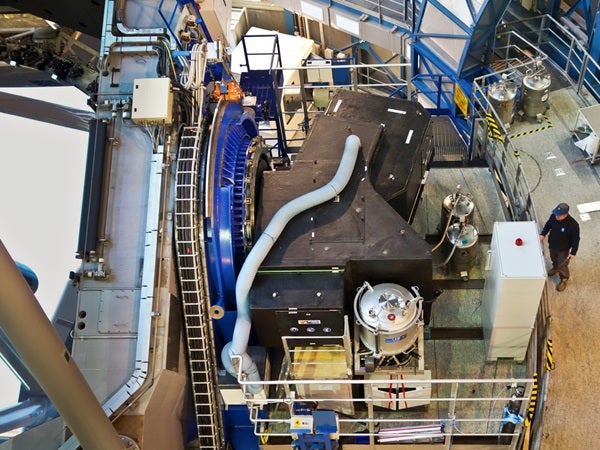Some pairs of stars consist of two normal stars with slightly different masses. When the star of slightly higher mass ages and expands to become a red giant, material is transferred to other star and ends up surrounding both stars in a huge gaseous envelope. When this cloud disperses, the two move closer together and form a tight pair with one white dwarf and one more normal star.
One such stellar pair is called V471 Tauri. It is a member of the Hyades star cluster in the constellation Taurus and is estimated to be around 600 million years old and about 163 light-years from Earth. The two stars are close and orbit each other every 12 hours. Twice per orbit, one star passes in front of the other, which leads to regular changes in the brightness of the pair observed from Earth as they eclipse each other.
A team of astronomers led by Adam Hardy from the Universidad Valparaíso, Valparaíso, Chile, first used the ULTRACAM system on ESO’s New Technology Telescope to measure these brightness changes precisely. The times of the eclipses were measured with an accuracy of better than two seconds — a big improvement on earlier measurements.
The eclipse timings were not regular, but could be explained well by assuming that there was a brown dwarf orbiting both stars whose gravitational pull was disturbing the orbits of the stars. They also found hints that there might be a second small companion object.
Up to now, however, it has been impossible to actually image a faint brown dwarf so close to much brighter stars. But the power of the newly installed SPHERE instrument on ESO’s VLT allowed the team to look for the first time exactly where the brown dwarf companion was expected to be. But they saw nothing, even though the high quality images from SPHERE should have easily revealed it.
“There are many papers suggesting the existence of such circumbinary objects, but the results here provide damaging evidence against this hypothesis,” said Hardy.
If there is no orbiting object, then what is causing the odd changes to the orbit of the binary? Several theories have been proposed, and while some of these have already been ruled out, it is possible that the effects are caused by magnetic-field variations in the larger of the two stars, somewhat similar to the smaller changes seen in the Sun.
“A study such as this has been necessary for many years, but has only become possible with the advent of powerful new instruments such as SPHERE. This is how science works: Observations with new technology can either confirm, or as in this case disprove, earlier ideas. This is an excellent way to start the observational life of this amazing instrument,” said Hardy.










